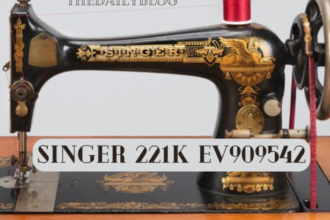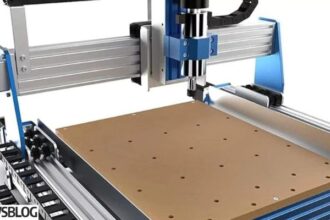Introduction
Small businesses have always faced a unique challenge: competing with large-scale manufacturers that benefit from massive production lines, established supply chains, and economies of scale. Traditionally, smaller companies had limited flexibility in design, prototyping, and low-volume production due to high tooling costs and slow turnaround times.
Enter 3D printing—also known as additive manufacturing—a technology that is turning the traditional manufacturing model on its head. By allowing businesses to create complex, customized products on demand without expensive molds or long lead times, 3D printing is unlocking opportunities that were once out of reach for smaller players.
From rapid prototyping to on-site production, here’s how 3D printing is transforming the manufacturing landscape for small businesses.
1. Rapid Prototyping Without the Price Tag
In the past, developing a prototype often meant outsourcing to specialized facilities, paying thousands of dollars for tooling, and waiting weeks for delivery. For small businesses, this was not only expensive but also risky—any design error meant starting over.
With 3D printing, prototypes can be designed, printed, and tested within hours at a fraction of the cost. This enables small companies to:
- Test multiple iterations quickly.
- Spot design flaws early.
- Make changes on the fly without retooling.
For example, a small home décor startup can design a new lamp base in CAD, print it overnight, and have a functional prototype ready for review the next morning. This speed dramatically reduces time-to-market.
2. Low-Volume Production Becomes Economically Viable
Traditional manufacturing favors mass production because of high setup and tooling costs. For small businesses selling niche products in batches of 50, 100, or 500 units, these costs can be prohibitive.
3D printing changes the equation. Since there’s no need for molds or dies, producing small batches is cost-effective. This is particularly beneficial for:
- Customized promotional products.
- Limited-edition product runs.
- Specialized replacement parts for legacy equipment.
This flexibility allows businesses to respond to customer demand without overproducing, helping reduce inventory costs and waste.
3. Enabling Customization at Scale
One of the most significant advantages of 3D printing for small businesses is mass customization—the ability to produce individualized products without slowing down production or driving up costs.
From personalized phone cases and engraved kitchen tools to custom-fit medical devices, 3D printing can produce each item slightly differently without any additional tooling. Illuminated letters and shop signs are high cost made in USA and other developed economies. In addition, the delivery time is also very long. The cost and the time will be great save by 3D printing them.
This creates a competitive advantage for small brands that focus on personalization and customer experience.
4. Supply Chain Independence
Recent global supply chain disruptions have revealed the risks of over-reliance on overseas manufacturing. Small businesses are especially vulnerable to delays and price fluctuations.
By integrating 3D printing into operations, small manufacturers can:
- Produce parts and products on-site.
- Reduce dependence on foreign suppliers.
- Lower transportation costs and lead times.
For example, a small automotive parts seller can print components locally as orders come in, ensuring faster delivery and reduced risk of stock outs.
5. Reducing Waste and Supporting Sustainability
Unlike subtractive manufacturing, where excess material is cut away and discarded, additive manufacturing builds objects layer by layer, using only the material needed.
For small businesses, this means:
- Lower material costs.
- Less waste sent to landfills.
- The ability to use eco-friendly filaments such as PLA (derived from corn starch) or recycled 3D printer filament.
In an era where customers increasingly value sustainability, adopting 3D printing can strengthen a brand’s eco-friendly image.
6. Lower Barrier to Entry for New Entrepreneurs
In the past, starting a manufacturing business required significant upfront investment in equipment, space, and staff. With 3D printing, entrepreneurs can operate from a small workshop—or even a home office—with just a desktop printer and CAD software.
This has sparked growth in micro-manufacturing businesses producing everything from custom jewelry to drone parts, allowing entrepreneurs to test ideas and scale production gradually without massive financial risk.
7. Unlocking Innovation Through Iteration
Innovation thrives when businesses can afford to experiment. 3D printing allows small manufacturers to:
- Test unconventional designs.
- Incorporate customer feedback quickly.
- Create products that would be impossible or prohibitively expensive with traditional methods.
Complex geometries, internal lattice structures, and lightweight yet strong components are now within reach of even the smallest teams.
Challenges to Consider
While 3D printing offers tremendous opportunities, small businesses should be aware of:
- Material limitations: Some 3D printing materials may not match the strength or heat resistance of injection-molded parts.
- Post-processing needs: Smoothing, painting, or other finishing steps may be required for a polished product.
- Learning curve: Mastering CAD design and printer maintenance requires time and training.
Still, these challenges are often outweighed by the flexibility and cost savings.
The Future: Hybrid Manufacturing Models
Many experts predict a rise in hybrid approaches, where small businesses use 3D printing for prototyping and short runs, then transition to traditional manufacturing for high-volume production. This strategy balances the speed and flexibility of additive manufacturing with the efficiency of large-scale methods.
As printer speeds increase, materials improve, and costs drop, we can expect 3D printing to become a standard tool in small business manufacturing—much like computers and smartphones are today.
Conclusion
3D printing is no longer a futuristic novelty—it’s a practical, powerful tool that levels the playing field for small businesses in manufacturing. By enabling rapid prototyping, low-volume production, customization, and supply chain independence, it empowers entrepreneurs to compete with larger players while staying agile and innovative.
For small business owners looking to improve product development, reduce costs, and offer something truly unique to their customers, the question is no longer if 3D printing should be adopted, but when.

















